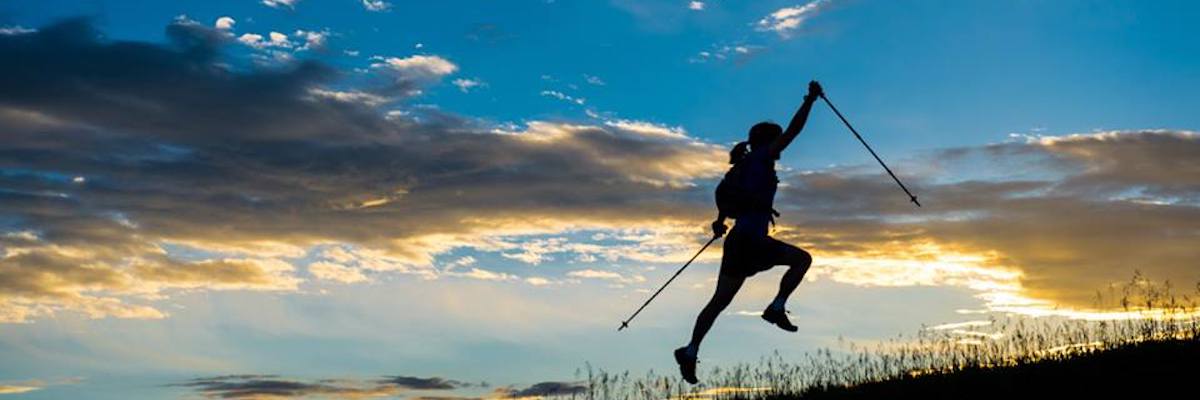Posted by: Katie Coakley
Meet local luminary and GoPro Mountain Games mainstay Ellen Miller
By Shauna Farnell
When the going gets tough, Ellen Miller fixes her gaze on the mountains around her. The sight is all it takes to get her going with fresh ardor. This medicine has been applied in a number of circumstances throughout her life – at times of loss, when taking the last few steps toward the summit of Mt. Everest, topping out on any number of other dizzying peaks, or when recovering from major surgery.
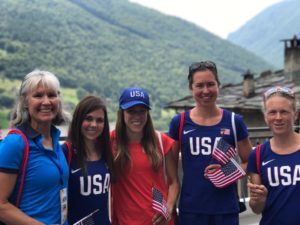
The long-time Vail Valley resident and U.S. Mountain Running Women’s Team manager can usually be found on Vail Mountain moving against gravity in some form or other, be it hiking, biking, running or coaching a group of Vail Athletic Club athletes. She’s always on hand at the GoPro Mountain Games, evaluating runners in the 10K race for possible recruitment onto the U.S. Mountain Running Team or participating in the Rocky Dog event with her dog Stella.
“I’ve never missed one,” she says. “I won’t be running much this year, but that’s the beauty of the Mountain Games … you feel the spirit – this beautiful, refreshing, healthy, athletic energy – whether you’re walking through the village, cheering for someone or doing an event yourself.”
This June’s Rocky Dog will mark a milestone for Miller as her first competition following what she hopes is her final major surgery.
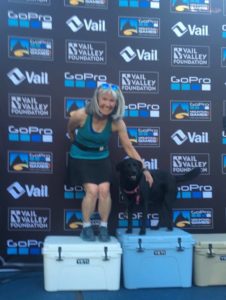
After undergoing two hip replacements 10 years ago, Miller had to return to the surgeon again two years ago when a metal socket had to be replaced. Since then, it became apparent that she had a degenerative hip disease that required an incredibly invasive procedure. She got it over with this March.
“The recent surgery was to re-craft my pelvis. I have a 13-inch-long incision mark. It was a big ass surgery,” she says. “It feels really good so far. I can’t hike until I’m 12 weeks out, but I’m excited about easing back into it. You go through this stuff and you never take a tiny thing for granted ever again. Getting out on Vail Mountain after my surgery, it didn’t matter that I’d been doing it for 30 years, it felt like a miracle, like a gift.”
Growing up in Asheville, N.C., Miller moved to Colorado at age 19, living in the Denver area before moving to Crested Butte and then to Vail.
“I was kind of a tomboy as a kid; hiking and running were just part of my life. Coming to Colorado was all about trail running and mountain running. It was all about higher mountains,” she says.
In short course, Miller set her sights on the world’s highest mountains. After numerous expeditions in Alaska, Europe and South America and a summit of Tibet’s 26,864-foot Mt. Cho Oyu, Miller embarked on her first Everest trip in 2001 from the northeast approach in Tibet. She reached the summit without incident. The next year, in 2002, she bagged the world’s highest peak again, this time starting from the southern approach in Nepal. She became the first American woman to summit from both sides and is still one of just a handful of women worldwide to do so.
“It’s just the way my life unfolded … I didn’t plan for it,” she says. “Knock on wood, I adapt very well to extreme high altitude. I’ve climbed with people – particularly men – who are a lot stronger than I am and more fit. Extreme high altitude is about physiology. It can change at any moment. I’ve been very fortunate.”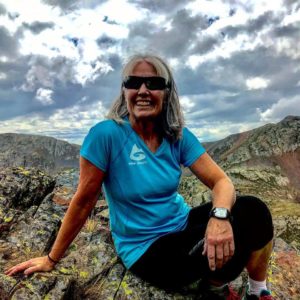
Miller has returned to Nepal many times since her Everest summits, leading expeditions to base camp and becoming the first American woman to complete the Everest Trilogy by climbing Mt. Lhotse (27,940 feet) and Mt. Nuptse (25,791 feet). She hasn’t been back in five years, but a return trip is in the cards as soon as she can make it happen.
“Nepal is my second home. I’m dying to go back,” she says. “In the overall scheme of things, very few people get to go up there. You start to appreciate the whole opportunity of it all.”
That’s not to say it’s easy. Famed mountaineer Caroline Gleich reached out to her regarding an Everest bid and Miller did not mince words about what to expect.
“She’s like, ‘what’s the deal? Why are there so few women on Everest?’ I said, you’re going to find out soon enough. It’s cold and it’s stormy and you’re way up there. It’s highly uncomfortable.”
It’s a natural circle when we, as older athletes, give back and make time to serve. It’s so inspiring.
The complex challenge of accomplishing what might seem like a simple goal – reaching the top of one of the world’s highest land surfaces at altitudes where the human body and brain begin to shut down – is what makes the experience so meaningful to Miller. It’s that discomfort that has delivered many of her most important life lessons.
“Besides the sheer beauty of those high places, it’s the learning about myself that’s the draw for me,” she says. “I get to interact with myself on a much deeper level when I’m in those situations. The discipline and focus required, I find it does a beautiful thing for my brain. It puts it into a unique flow. Everything else just falls away. You’re having an internal dialogue that’s very truthful and very real. In the midst of these high-stress moments, you’re also in the midst of such beauty and grandeur. You can see the curve of the earth. It’s overwhelming. I experience a beauty and grace and purity in the high cold places that I can’t experience in regular life.”
Even if the local peaks aren’t as cold or as high, Miller, 60, says they still deliver a similar dose of “giddiness.” This, along with the gratitude and skills – both mental and physical –learned throughout her global expeditions are virtues she tries to impart as a guiding light for others.
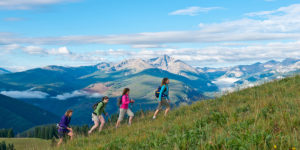
“At my age, I get just as much joy in supporting the young athletes as I did back when I could compete like that,” she says. “It’s a natural circle when we, as older athletes, give back and make time to serve. It’s so inspiring.”
Measuring heart rate and building physical strength are key ingredients to success in any physical endeavor, but as Miller has learned first-hand, mental and emotional fortitude are what allows a person to transcend the toughest obstacles.
“Don’t underestimate the power of your mindset or the importance of taking care of your brain – your neuro-pathways – as much as your body,” she says. “How we think most often is going to determine how we think in the future. If you want to have a bright, positive outlook on life, you have to practice that. Your brain is building those pathways, that higher level of self-awareness. I’m trying to help my aging athletes understand the power of their minds. If we want to be happy 80-year-olds, we have to be happy 60-year-olds.”
Miller will often take a group of athletes to the slopes of Vail and have them sprint up them in intervals, channeling their energy to their minds as much their muscles.
“It feels terrible, but if people can bring their mind around to a place of positivity – maybe it’s something they connect with in nature, maybe a mantra – they can cultivate that awareness and change their mindsets,” she says. “For me, it’s lifting my eyes and gazing out at the mountains. As soon as I see those summit ridges, I can breathe in.”
Share this Story:
